Induction stoves with built-in batteries: how to boil water in 40 seconds
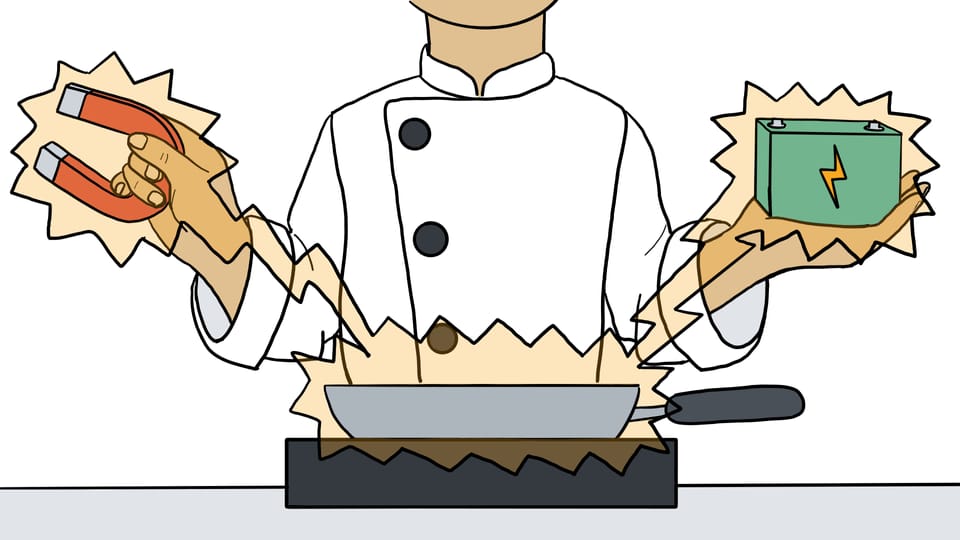
When I say ‘electric stove’, what comes to mind? Perhaps you imagine the rusty, red-hot coils on the ancient stovetop in your crappiest apartment.
How about when I say ‘induction’? Are you wondering if that’s the same thing as convection?
Or did you break out into a cold sweat because you heard that Democrats are going to rip your God-given, gas-burning stove right out of your wall?
Reader, take a breath. Breathe deeply. Except… maybe don’t breathe too close to your gas stove, which is almost certainly leaking a noxious combination of methane, carbon monoxide, benzene, nitrous oxides, and formaldehyde gasses into your home at this very moment.
(Having a gas stove in your home not only increases the chances of kids getting asthma by 42%, but a growing body of evidence has linked gas ovens to the onset of adult dementia. Woof.)
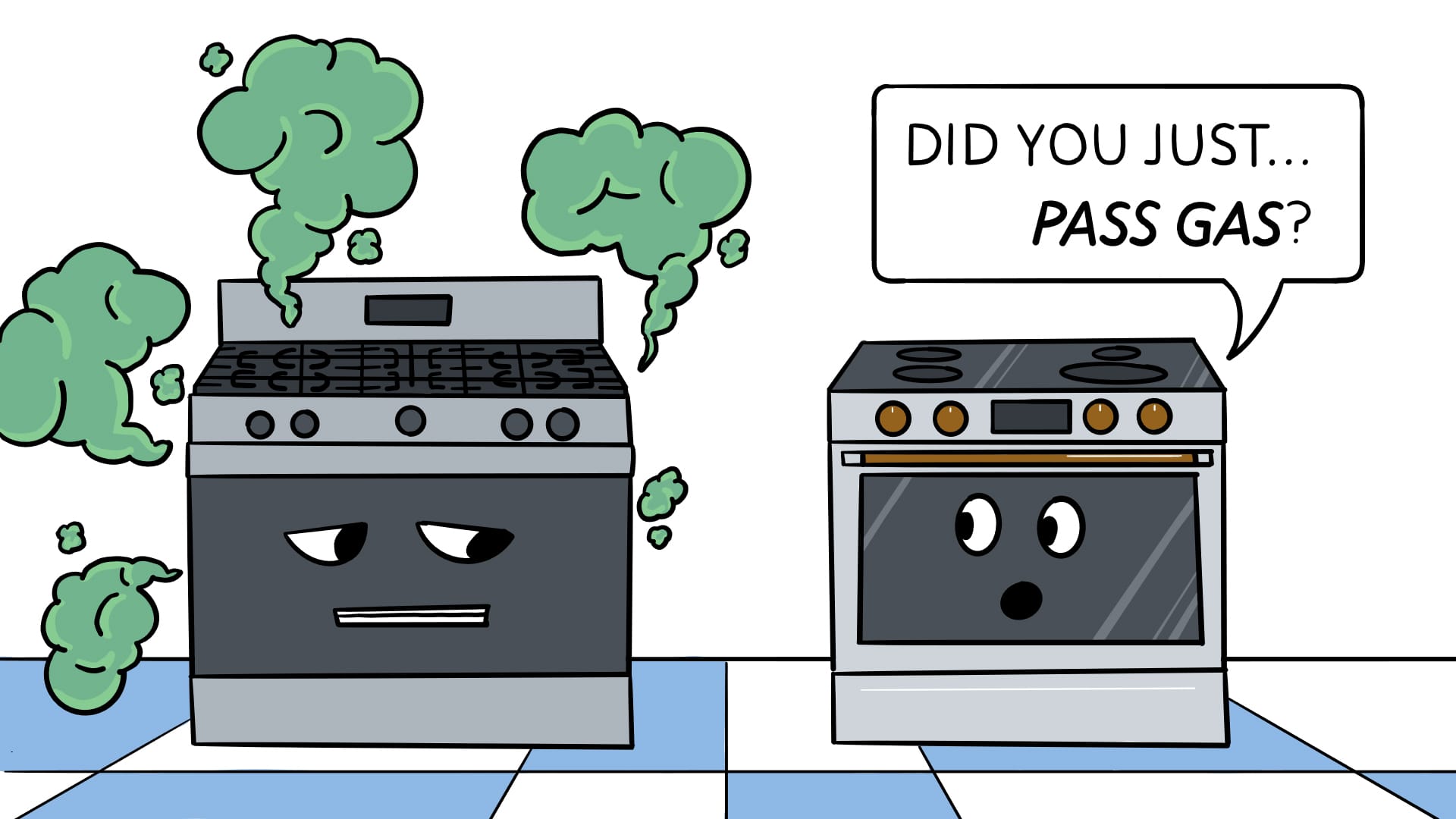
I’m getting sidetracked. We’re here to discuss one of the coolest, most futuristic, most wizardly clean energy appliances to hit the scene in ages.
It’s called…
The induction stove with a built-in battery!
Okay, so the name needs a marketer’s touch. I might call it a magnet stove. Or a battery-assisted magnet stove. Maybe we can make that happen. For now, let’s stick with induction + battery.
(This post is not sponsored, FYI. I just want everyone to get a wizard stove.)
To begin, a few basic terms:
Oven: The enclosed section of a stove. Where you bake cakes.
Cooktop: A standalone cooking surface, typically with four ‘burners’, installed directly into a countertop. No oven attached.
Stovetop: A four-burner cooking surface that sits on top of an oven.
Stove or range: A combined oven and cooktop.
Right. Moving along.
5 reasons why you want an induction stove with a built-in battery
1. Objectively better at cooking than gas
Boil a liter of water for pasta or tea in less than a minute. Preheat your oven 4x faster. Bake, fry, and broil at precise, consistent temperatures.
Here’s beloved celebrity chef Samin Nosrat endorsing her (presumably comped) Copper ‘Charlie’ stove:
“The heat is so steady that I can trust it in a way I can't when I'm cooking with gas.”
- Samin Nosrat, author of Salt Fat Acid Heat and Copper stove enjoyer
Here’s everybody’s favorite culinary mad scientist, J. Kenji López-Alt:
"For the vast majority of cooking that the average American home cook does, an induction burner will perform as well or better than a typical gas range."
- J. Kenji López-Alt, Gear Patrol
2. Sexy, sexy stoves
I mean, just look at the California black walnut knobs on the Copper ‘Charlie’ stove.
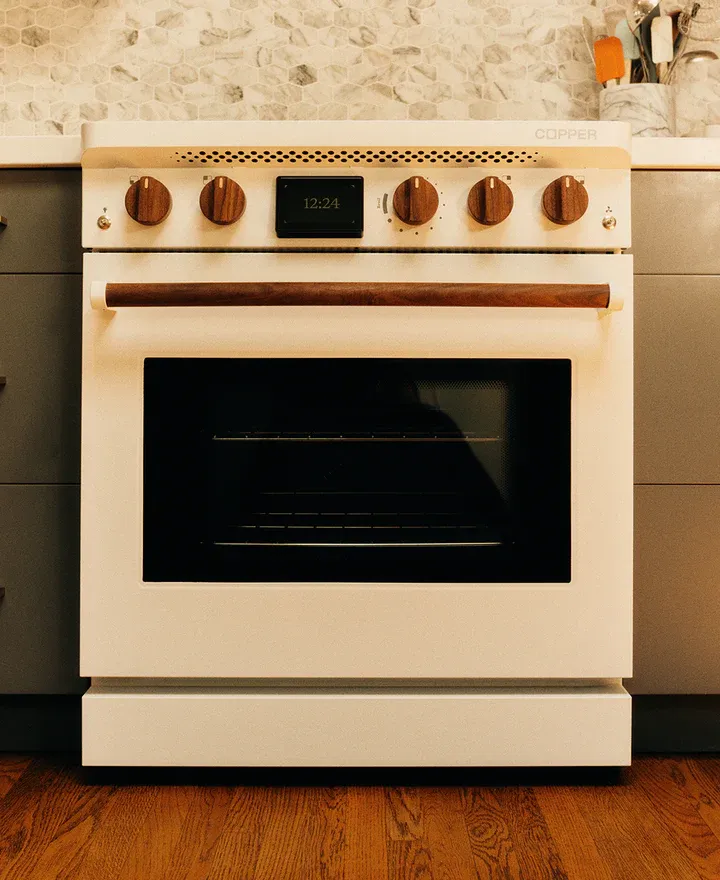
How slick is the display on this cooktop from Impulse?
Source: impulselabs.com
And don’t sleep on the industrial good looks of the Electra.
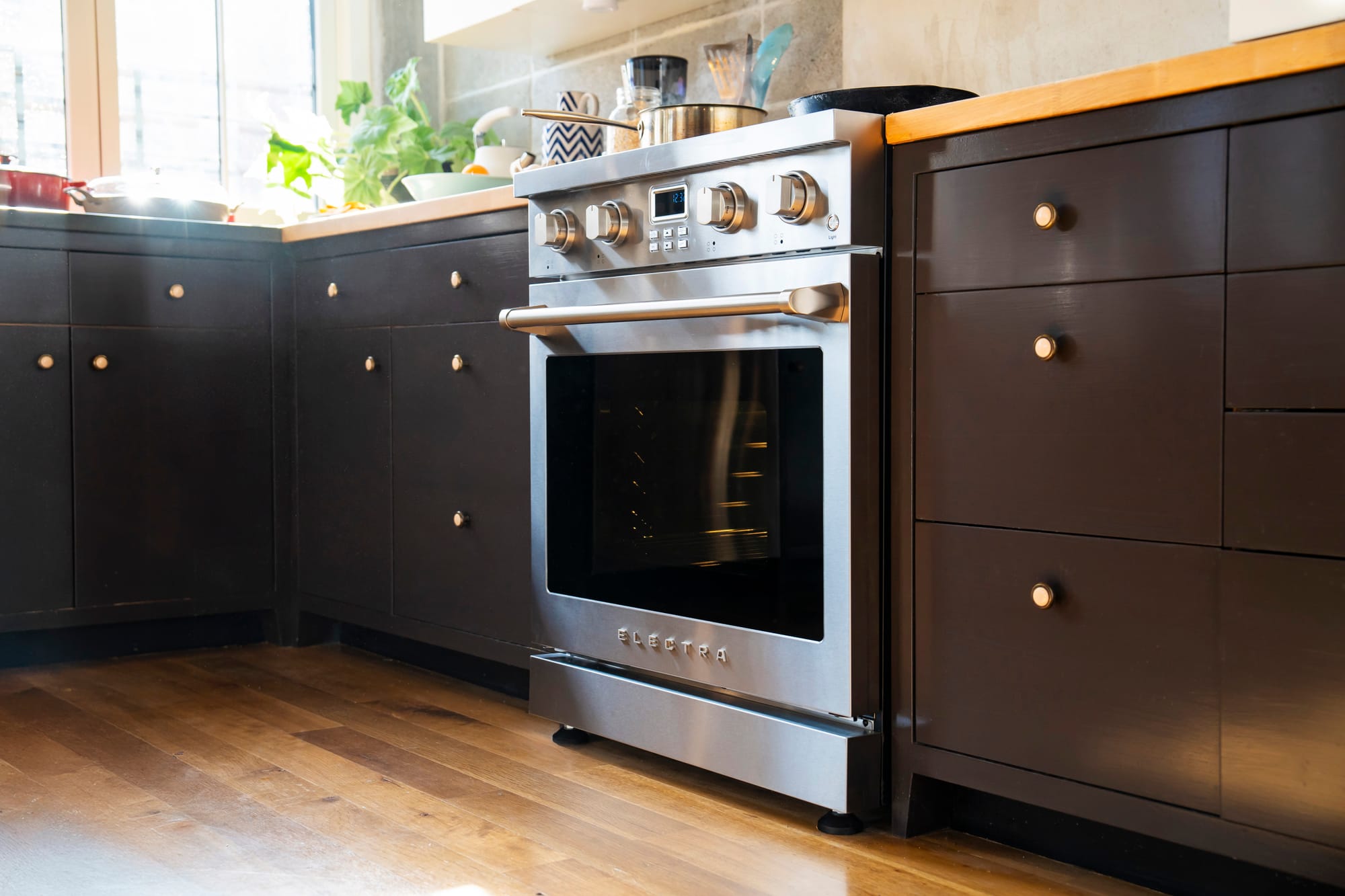
3. The cooktop doesn’t get hot?!
A crazy fact about induction cooktops is that they don’t get hot to the touch. That’s right: no more burning your fingies retrieving a sliver of caramelized onion from underneath a piping-hot burner grate. No more worrying about kids or cats going rogue while you’re simmering a stew. And no more tedious stovetop cleanup jobs: just wipe down the cool, smooth surface in seconds.
Understanding how this is possible requires getting into the physics of induction. Fair warning, it’s a bit sciencey. I needed bio PhD and Green Juice illustrator-extraordinaire Dr. Aarati to help me understand how it works.
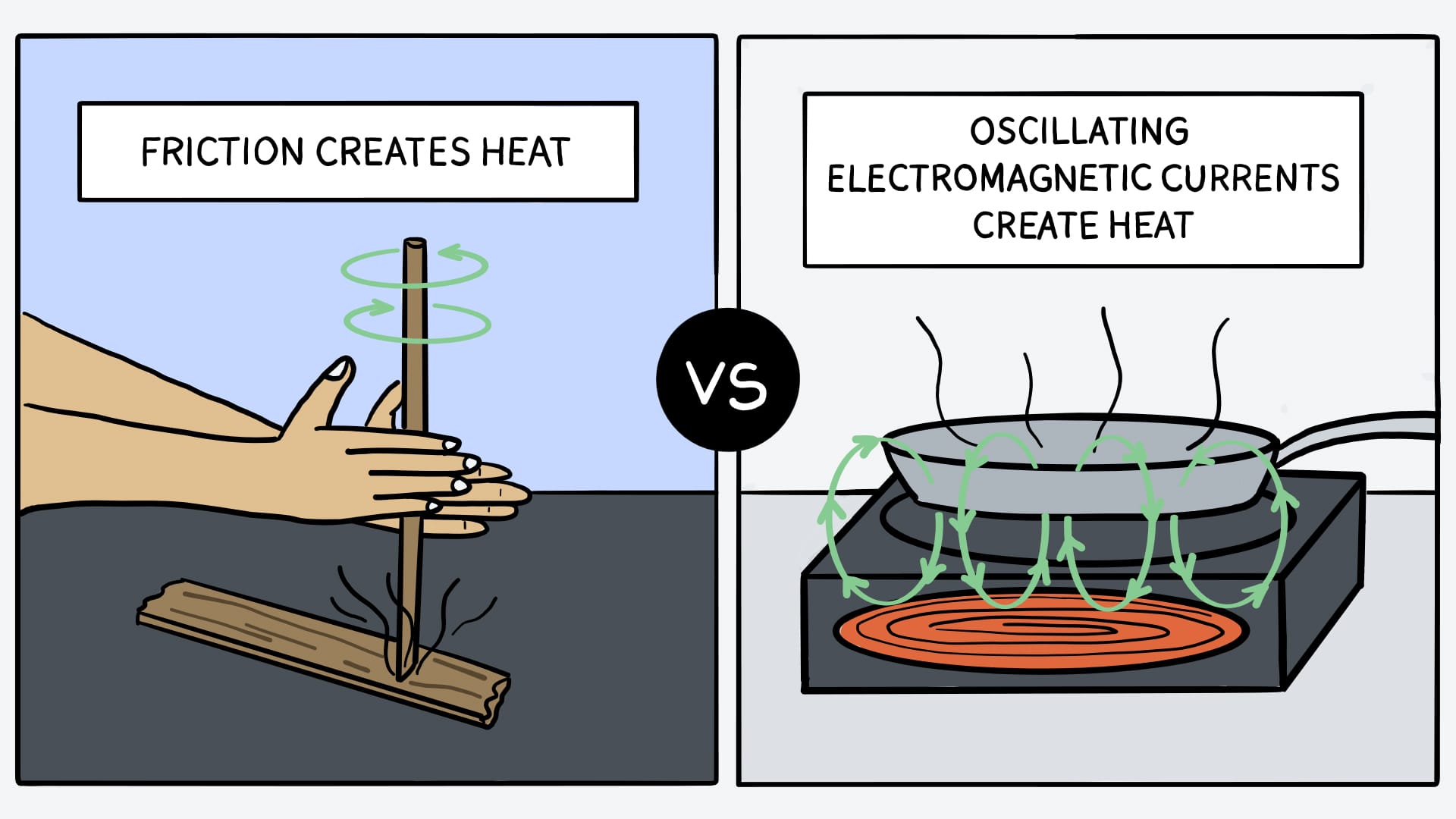
How induction works, featuring Dr. Aarati:
The easiest analogy for how induction cooking works is friction. A stick rotating back and forth really fast on a piece of wood will spark an ember because the wood is resisting the stick’s movements, and resistance generates heat. This also applies to rubbing your hands together on a cold day.
Induction cooking uses ‘magnetic friction’ in much the same way. An induction stove generates heat by creating an electromagnetic field that moves back and forth really, really fast—20,000 times per second.
When you put a piece of magnetic cookware—let’s say a cast iron frying pan—into the oven's electromagnetic field, an electric current enters the pan. And because the electromagnetic field is oscillating, i.e. moving back and forth super fast, it generates ‘magnetic friction’ (and thus, heat) as it bumps into the natural resistance in the cast iron pan’s molecular makeup.
Word.
But how does an induction stove generate a magnetic field?
Underneath each ‘burner’ in an induction cooktop is a piece of copper wire that’s been wound into a coil. When you send electricity into a copper coil, it creates an electromagnetic field. Why? I don’t know, it just does. A very brainy guy named Michael Faraday figured out in the early 1800s that electricity and magnetism are two sides of the same coin: electricity can create an electromagnetic field and magnets can create electricity. This principle is responsible for basically all of our electricity generation today, from wind turbines to nuclear power plants—the idea is to spin a magnet (using wind or steam) inside a set of wire coils to induce an electric current, which you can then route into the grid. Fun fact: Michael Faraday barely knew math! A true friggin’ genius.
Gas and traditional electric stoves (sometimes called ‘radiant heat’ stoves) work by transferring their heat to a pan. Whereas an induction stove’s magnetic field creates heat within the pan itself.
TL;DR: the pan gets hot (don’t touch the pan!), but the stovetop does not... at least not directly. If you're cooking at a very high temp, a hot pan can transfer some of its heat to the stove surface, so take care until you're more familiar with the cooktop.
4. The oven won’t make you sweat through your apron
Raise your hand if you avoid using the oven in the summer because it turns your kitchen into a bathhouse.
[raises hand]
Well, with one of these puppies, you’ll be baking grandma's mostaccioli all August long.
I mentioned ‘convection’ up top. The induction stoves I'm writing about actually use convection heating in their ovens—induction is only for the cooktop. It’s confusing, I know. But convection is easy to understand: electricity heats up metal elements in the oven, and a fan continuously circulates the heated air.
Ever used an air fryer? That’s just a mini convection oven, baby! (Except proper convection ovens don’t have the same constraints as air fryers—they can cook anything a gas oven can.)
Convection has several benefits over gas:
A. No venting = cooler kitchens
Burning gas creates CO2, water vapor, and just a touch of deadly carbon monoxide. Combustion of any kind requires a steady supply of fresh oxygen. Therefore, gas ovens vent out CO2, hot vapor, and CO, and they take in fresh air to keep the fire burning. That venting process is why so much oven heat escapes into your kitchen: it's by design.
Electric ovens don’t need to do all that. In fact, they’re tightly insulated so that the cooking heat stays at a very consistent temperature. Cooking at high oven temperatures will still produce a little ambient heat, but dramatically less than what you’re used to.
B. No more hot and cold zones or temperature fluctuation
By continuously circulating hot air, convection ovens eliminate the hot and cold zones you find in many gas ovens. You also don’t see the same temperature fluctuations, which come from the oven cycling on and off.
(Did you know the temperature of gas stoves routinely fluctuates by 25-50°F from what you set it to? No wonder our sourdough always comes out a little wonky-looking!)
C. Cooks food way faster
Because convection is so much more efficient than gas (and loses so much less heat), you’ll see cooking times improve by up to 30%.
Pro tip: generally, you’ll want to set your convection oven to a slightly lower temperature (about 25°F) and reduce your cooking time by 25-30% vs. what the recipe calls for. This might take some getting used to, but lower temps mean cooler kitchens and faster cooking gets dinner on the table quicker.
5. Adding a battery does so many good things
We haven’t even talked about the battery yet!!
Induction cooking has been around for a long time. But sticking a safe, durable, and powerful Lithium-Iron-Phosphate (LFP) battery into the bottom drawer of an induction oven (or on the underside of an induction cooktop) is a brilliant new innovation.
The battery brings a slew of benefits. Benefits to your cooking prowess, to your home’s energy resilience, to your impact on the climate, and to your electric bill. Here’s why it’s such a big deal.
A: Turbo-charge your cooking
Induction cooktops are way more powerful (and efficient) than their gassy counterparts.
So-called ‘natural’ gas is a fossil fuel—it's basically just methane—and burning fossil fuels is never efficient. A gas cooktop transfers only ~30% of its flame’s heat to the pan. The rest of that heat escapes into the air.
An induction cooktop, on the other hand, owns a whopping 90–95% heat-transfer efficiency rating. That means you can get more oomph out of your ‘burners’.
Adding an LFP battery juices your cooktop’s prowess even further, making it capable of amazing feats like boiling water for pasta, tea, or Neti potting in under a minute.
Just how powerful are induction stoves with a built-in battery?
Here’s a quote from the Impulse website: “It’s the most powerful stove on the market. With the integrated battery that can slowly charge up when you're not using it, and then quickly release that energy when you turn up a burner - there’s an incredible equivalent of 72,000 Btu/hour of heating power, or 10 kW. (Compare that to 18,000 Btu/hour for the best gas stoves currently on the market, or the equivalent of 28,500 Btu/hour for some of the best induction stoves.)”
I'll translate. Btu (British thermal units) measure heat energy. One Btu can be approximated as the heat produced by burning a single match. So 72,000 Btu/hour means that the Impulse cooktop can produce the approximate heat equivalent of 72,000 matches burning for a full hour—almost instantly. Crikey! Compared to the best gas stove on the market, induction+battery equals a power improvement of up to 4x.
B: Charge with cheap, clean energy, save money at dinnertime
As discussed in this grid explainer post, energy is cheapest during the middle of the day when solar farms are funneling clean energy into the grid. It’s increasingly common for electricity to cost literally nothing for some part of every day in places with lots of solar panels and wind turbines, like California and Texas.
The battery in your induction stove will soak up that cheap (or free!) power and store it for later use. So when you cook dinner in the evening—the time of day when energy is the most expensive—your stove will draw its power from the battery’s reserves and not from the grid.
I spoke with Bert Muthalaly, a cool dude and founder of the Brooklyn-based climate-tech lab Electra Research, which makes the Electra stove shown above. Bert estimates that most people will save—conservatively—$100–$200 a year on their electric bill just by avoiding cooking during those peak-rate electricity prices.
By reducing your home’s demand for peak-rate power, you’ll also help balance the grid for everyone else. If enough homes had induction stoves with batteries, it would make a material difference in keeping overall energy prices low and preventing blackouts.
(Just to be clear: induction stoves work any time of day. If the battery isn’t charged, the stove draws its power from the grid.)
C: No need to upgrade your panels
Before guys like Bert had the bright idea to stick a battery in there, induction stoves required your home to be outfitted for more power capacity than most of us in America are equipped for.
Our standard wall outlets in the U.S. are measured for 120 volts. But an induction stove without a battery (or just about any electric stove, really) generally requires 240 volt outlets.
Think of volts as the energy equivalent of water pressure in your shower. Lots of volts = 'water' comes bursting through the shower head, stinging (electrocuting?) your face.
In kitchens designed for electric stoves, that kind of big-time power capacity comes standard. But for most of us, upgrading to 240v would require a lengthy and expensive visit from a professional electrician.
But with battery-powered assistance, these newfangled induction stoves can be plugged right into a standard 120 volt wall outlet. The battery makes up for the lack of voltage, no upgrade required.
D. Don’t go hungry during a blackout
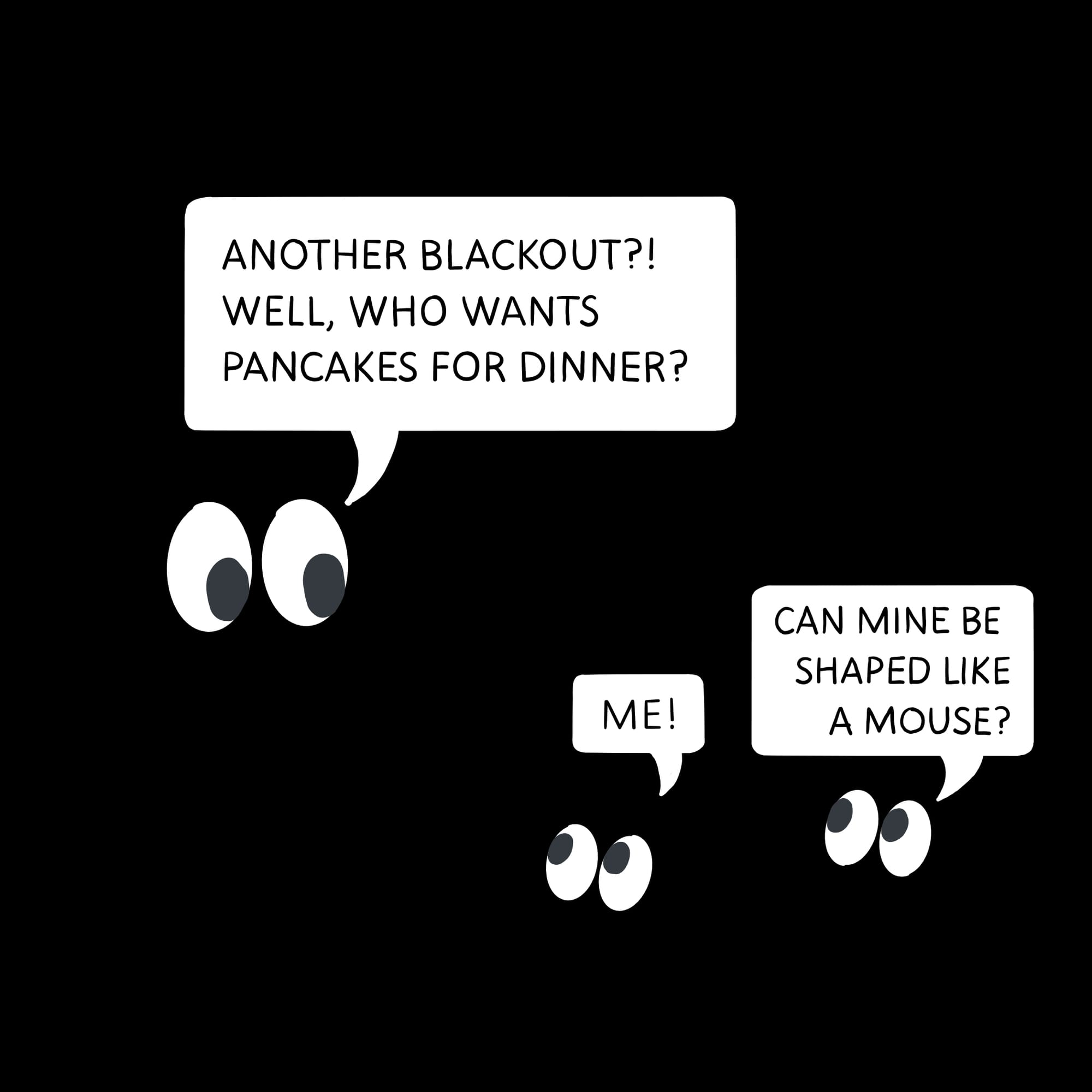
Power outages have become routine in places with congested grids. Why? Because our energy grid is fucked. Increased demand for electricity cannot be met by our current infrastructure, and while there are real solutions to this problem, our current government doesn’t give a shit about us.
(FYI, the cost of electricity is almost guaranteed to rise dramatically in the coming years. That’s why Bert’s savings estimate can be fairly labeled ‘conservative’.)
Achieving some measure of energy resilience is the best way to protect your household in the event of an unexpected blackout. The very best way to gain energy resilience is with a combination of rooftop solar and a dedicated home battery setup. Wall-mounted home batteries from companies like Enphase are more powerful (and have more utility) than what you’ll get with an induction stove+battery, but there’s still real value in having a battery in your stove.
Both Bert’s Electra and the Copper ‘Charlie’ stove include a 5 kilowatt-hour battery standard, which can provide enough juice to cook 3–5 meals during a blackout.
The Impulse, a standalone cooktop, comes with a slightly smaller battery (3 kWh), but you’ll still be able to cook three full meals during a power outage.
BONUS: These stoves qualify for a 30% tax rebate!
Because their included batteries are 3 kilowatt-hours or bigger, these stoves all qualify for the federal tax credit for residential battery energy storage systems—30% off the top when claimed as a tax credit. That’s no small potatoes!
You may also qualify for local induction oven rebates, like the $750 rebate offered in the Bay Area.
If you haven’t filed your taxes yet, order yourself an amazing new oven and claim that shit before Trump kills the tax credit.
Which model is right for you?
As of this writing (4/9/25), I’m aware of just three companies currently making induction stoves with built-in batteries. Here’s how they compare:
Most affordable: Electra
Induction cooktop + convection oven + 5 kWh battery
Made right here in Brooklyn, Electra is by far the most affordable option on the market, retailing for $3,500 (but remember: there's a 30% federal tax credit!).
Bert’s philosophy is to make cooking with the Electra feel just like cooking with a conventional gas stove. You’ll recognize the Low - Medium - High labels on the knobs… and you’ll come to love the new “Max” label, useful for when you want to go crazy mode on some asparagus.
Electra plans to start shipping their ovens this coming summer.
Most prettiest: Copper’s ‘Charlie’
Induction cooktop + convection oven + 5 kWh battery
You’ve gotta hand it to them: the Charlie stove looks frickin’ amazing. If you’ve got $6k (pre-tax credit) lying around to splurge on an oven that will definitely make your friends jealous, choose Charlie.
Most powerful: Impulse
Induction cooktop + 3 kWh battery
The Impulse also retails for $6k (pre-tax credit) but it doesn’t include an attached oven. Why would you pay so much for just the cooktop? Because you’re all about the power!
The Impulse is capable of the most sheer heat production of the three stoves. Its super-charged ‘burners’ are all capable of hitting a whopping 10 kilowatts—and a total of 16 kW when used together. (Meanwhile, the best induction stoves on the market can barely surpass 3 kW with any one burner.) 10 kW is hot enough to boil a liter of cold water in less than 40 seconds!
Impulse is not concerned with presenting like a traditional stove. It leans into its induction superpowers. Rather than just turning a ‘burner’ to medium, the Impulse encourages you to set the exact cooking temperature you want. Perhaps you’ll discover you prefer your eggs flash-fried extra-crispy at 485 degrees. Who knows? But with some practice, you’ll learn to create restaurant-quality dishes with incredible consistency.
I’ll note that Impulse isn’t a slouch in the looks department, either. It’s got a beautiful digital interface and features removable magnetic knobs for easy cleaning (and for quickly checking to see if your cookware is induction-compatible).
Good info to know
Now that you’re sold on the magical power of induction (right?), let’s get to the nitty-gritty. Here’s some stuff you ought to know.
1. Induction cooktops only work with magnetic pots and pans
Makes sense, right? A magnetic field is only going to affect magnetic cookware. Thankfully, lots of cookware is magnetic: carbon steel, most stainless steel, cast iron, enameled iron (like a dutch oven), and nickel-base.
What won’t work with induction? Cookware made of pure aluminum, copper, glass, or ceramic.
A simple test: hold a fridge magnet up to the pot or pan in question. If it sticks, winner-winner-chicken dinner.
2. Convection ovens, however, don’t require magnetic cookware
Only the cooktops use induction. The ovens in the Charlie and the Electra both use convection, a similarly named cooking process that involves circulating hot air with a fan. A convection oven can do anything a gas oven can.
3. Not ready to buy a whole-ass oven? Consider the mini induction cooktop
If you’re induction curious but not quite ready to splurge (or you’re, you know, a renter like me), consider ordering a cheap but super-effective mini induction cooktop. You’ll reap most of the same benefits of the full cooktop, including:
- Ultra-fast heating and water boiling
- Energy efficiency over a standard stovetop
- Cool-to-the-touch, easy-to-clean cooking surface
- Reducing poison gas emissions in your home
Best of all? These puppies sell for less than $100 on Am*zon. You can get a single ‘burner’ about the size and shape of a digital cooking scale, or a bigger double burner, or even a quad.
Bert recommends the brand NuWave. You can also check out Serious Eats’ top six portable induction cooktop recommendations.
4. Shutting off the gas line to your oven is simple
Once you get your new induction stove, you’re gonna want to shut off the gas line to your oven ASAP.
In New York City (and presumably elsewhere), you’re officially required to have a master plumber do this for you.
But just so you know, all they’re gonna do is wrench the valve behind the oven 90 degrees to disconnect the line.
A good plumber will also cap off the gas line to your oven, make sure the line is totally sealed, and confirm that there are no leaks in the system.
5. These puppies are heavy
Charlie, in particular, is a big boy, weighing in at a sizable 354 pounds. (The battery alone is 130 pounds.)
The Electra oven comes in at about 295 pounds, about as much as a modern fridge.
By comparison, a typical gas-oven weighs closer to 150 pounds.
Who’s lying to you about this?
It’s been tough for Big Dystopia to pretend induction stoves aren’t better in almost every respect than gas, so instead they routinely lie about the dangers posed by fossil fuels—often at taxpayer and utility ratepayer expense. Here are some of the culprits lying to you about methane gas:
1. ‘Natural’ gas companies
There is a long, well-documented history of so-called ‘natural’ gas companies bald-faced lying to the public. They want you to think that burning methane is good; that it’s a ‘stepping stone’ to a future where we use more renewable energy.
The truth is, the methane your stove leaks and burns is a poison that’s 80 times worse for climate change than CO2 over a 20-year period. Induction, meanwhile, is fully electric and uses no gas at all. If you source your power from renewables—via your own rooftop solar array, a community solar project, or a renewable energy utility like Green Mountain, then you can rest easy knowing you’re not contributing to climate change every time you bake a potato.
2. Your elected representatives
I find it astounding that we allow corporations to pay politicians for the express purpose of securing their votes and torpedoing common sense climate legislation. But that’s the world we live in! The gas industry prefers to lobby under the guise of ‘astroturfed’ groups—i.e. fake grassroots campaigns—with names like the American Gas Association (AGA) and the Propane Education & Research Council (PERC). They’re just doing education and research, folks.
I’ll cite a relevant example. Here in New York, activists have been trying to pass an important piece of climate legislation called the NY HEAT Act, which would stop New York state from subsidizing the construction of new natural gas pipelines, among a few other no-brainer climate initiatives.
Activists have been trying to get this bill passed for the last few years. But it’s not happening. Why? Nobody knows for sure, but some have wondered if it’s related to Governor Kathy Hochul receiving $160,000 in campaign contributions from Avangrid, the parent company of New York State Electric and Gas, through its employee political action committee (PAC). Individual executives at Avangrid donated an additional $4,500, presumably because they love the Governor’s extremely cautious approach to doing anything at all.
Kathy’s also taken a cool $67,000 from Con Edison's PACs and staff, including $10,000 from CEO Tim Cawley. Good shit, Tim!
Or possibly it has something to do with State Assembly Speaker Carl Heastie getting $99,000 in donations to committees he controls from a group called New Yorkers for Affordable Energy, whose membership includes the American Petroleum Institute and National Grid (our for-profit and state-sanctioned monopoly gas utility).
Personally, I don’t think I’d be willing to take such an active role in destroying all life on earth for less than $100k, but it takes all kinds.
3. Law firms working on behalf of Big Dystopia
If you can’t beat ‘em, sue ‘em into submission.
In 2019, Berkeley, California, became the first U.S. city to ban gas hookups for heating and cooking in all new buildings. This inspired similar legislation in dozens of cities, including NYC and Los Angeles.
But less than two months before Berkeley’s gas ban went into effect, a restaurateur trade group called the California Restaurant Association submitted a lawsuit against the policy, with the American Gas Association filing a “friend-of-the-court” brief in support.
A totally unbiased court ultimately ruled against the city. Berkeley agreed to overturn its groundbreaking anti-gas policy. Good shit.
No dumb questions
Never, ever feel embarrassed about asking questions. First of all, this is brand-new technology—but even if that wasn’t the case, nobody’s out here informing the public about this shit. The only way we learn is by asking. So send your questions to jon@greenjuice.wtf and I’ll do my best to answer them every week.
For now, here are some questions I made up:
Q: Will one person buying an induction stove really make a difference in the fight against climate change?
A: That's kind of a loaded question, Jon! Will buying an induction stove solve climate change? No. But by shifting the majority of our power use from peak times on the grid—when power is the most expensive and dirtiest—to the cleanest, cheapest power, we help make gas 'peaker' plants unnecessary and accelerate the transition to renewables. The kitchen is a great place to start: it's the highest energy usage room in the house.
Besides, these sexy, magical stoves are an amazing advertisement for the power of ultra-modern clean energy appliances. Host a dinner party featuring your beautiful new stove, show off its cooking prowess, and you will be the talk of the town. Maybe you'll start a trend. The way we change minds is by showing the people who love and trust us that a better, sexier way is possible.
Q: So you really want me to drop $6k on a new oven?
A: There's a 30% tax credit!! But, yes, obviously this is not a realistic option for most folks. That said, an induction+battery oven will pretty much pay for itself over the course of its life. Let's say Bert's $200/year in utility bill savings estimate holds. Ovens typically last around 15 years. 15 x $200 = $3,000 lifetime savings. Not bad! And if you buy the Electra stove ($2,450 after the tax credit), you might even come out ahead.
It's a common conundrum with green technology: the upfront cost of a product or solution is higher than its fossil fuel alternative—but you end up saving money in the long run. For some big ticket items, like rooftop solar, you can finance your purchase and even pay it off for less per month than what you save on energy costs. Hopefully, similar financing options are coming for induction+battery ovens soon.
Q: If the cooktop doesn’t use fire or have coils that turn red, how will I know it’s on?
A: Each of the stoves I’ve discussed has a built-in way to tell if the stove is on. Impulse has LED rings on its ‘burners’ that reflect the temperature; Charlie and Electra both have visual cues to signal it’s on.
Q: Won’t I miss the open flame?
A: I mean, maybe? But maybe not. Humans are wildly resistant to change, and we justify that resistance in any number of poorly excused ways. Personally, I don’t enjoy sweating while I cook dinner, or forgoing sheet-pan veggies during the hottest months of the year.
Also, some induction stoves have an LED flame—a good option if you think you’ll miss that visual cue.
Q: You said the batteries are safe. But are the batteries really safe?
A: Short answer: yes.
Long answer: There are many types of lithium ion (LI) batteries in the world, and quality control is a vast spectrum. High demand for cheap LI batteries means that, sadly, there are a lot of shitty batteries out there. Here in New York, we’ve experienced a rash of apartment fires caused by the crappy LI batteries in unregulated imported e-bikes. But those cheap e-bike batteries typically use Nickel-Manganese-Cobalt (NMC) chemistry, which is more prone to catching fire. Furthermore, LI batteries sold in New York are required by law to be certified by an accredited testing laboratory, such as Underwriters Laboratories (UL). But shitty e-bike batteries are almost never safety-certified.
The battery in an induction oven is not the same type of battery that goes into shitty e-bikes. The induction stoves discussed in this post all use Lithium-Iron-Phosphate (LFP) batteries. It’s a completely different chemistry: literally, the battery is made using different chemicals. LFP batteries have significantly improved safety and longevity characteristics compared to other types of LI battery. They’re also the same battery type you find in almost all electric vehicles (EVs). The three stoves discussed in this article were all designed to meet UL's strict standards.
Q: Will the battery get worse over time?
A: Lithium-Iron-Phosphate (LFP) is an inherently long-lived chemistry. That means you get way more ‘cycles’ out of it, and it will not degrade over time the way an old iPhone battery does. If you have a newer iPhone, maybe you’ve noticed the battery doesn’t start to crap out after just a few years. That’s because newer iPhones use, you guessed it, LFP batteries.
Go deeper
The clean energy revolution is a complex and fascinating subject, and there are lots (and lots) of resources out there for anyone interested in diving deeper. Here is but a short selection:
- Listen to this episode of the Volts podcast with the CEO of Copper and Impulse: Induction stoves with batteries built in, and why they matter (1:06:01)
- Read J. Kenji López-Alt’s interview about induction in the Atlantic
- Watch this helpful induction science explainer from MinuteFood (YouTube, 7:26 mins)
- Watch an excellent, hilarious video from Climate Town: It’s Time To Break Up With Our Gas Stoves (YouTube, 21:27 mins)
- Watch an even better, even funnier video from Climate Town: Natural Gas Is Scamming America (YouTube, 39:59 mins)
- Read about what happened in Berkley (and elsewhere) in The Guardian
Correction: This post initially claimed the Impulse cooktop only had one burner capable of hitting 10 kW. In fact, all of their burners can hit 10 kW.



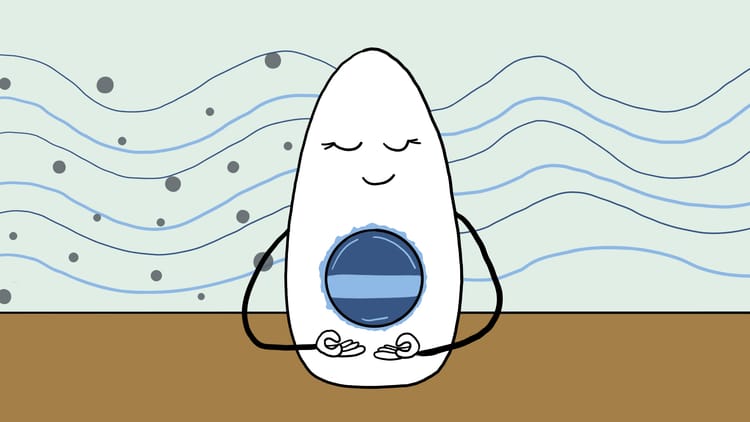

Member discussion